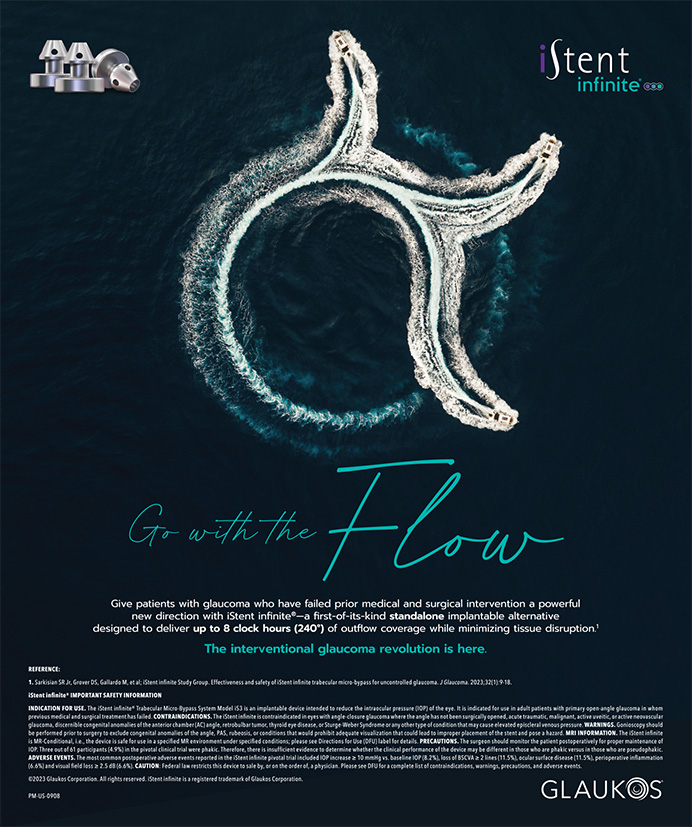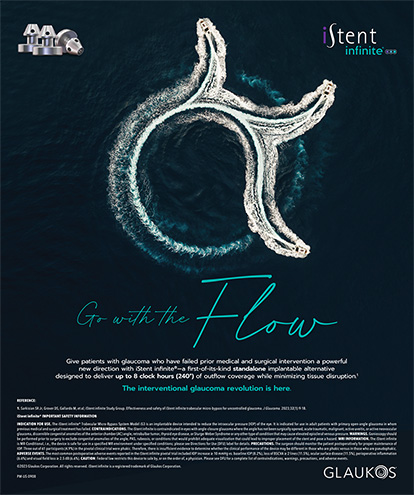How does one take full advantage of the continual improvements in presbyopia-correcting IOL technology? Doctors and patients are looking for the perfect lens, which I do not believe currently exists. Instead, I focus on the process of selecting patients.
OPTIONS
Available presbyopia-correcting lenses include two from Abbott Medical Optics Inc. (Santa Ana, CA): the Tecnis Multifocal and the ReZoom. Also on the market are the AcrySof Restor IOLs (Alcon Laboratories, Inc., Fort Worth, TX) and the Crystalens HD (Bausch & Lomb, Rochester, NY). Of course, monovision is an option for presbyopic correction, so ophthalmologists may choose near or distance vision with a monofocal lens. The Tetraflex IOL (Lenstec, Inc., St. Petersburg, FL) is available in Canada but not the United States. In some countries, silicone and acrylic versions of some of the aforementioned lenses are available. The possibility of mixing IOLs increases the number of possible strategies for correction.
I try to determine the best approach to correcting the vision of each patient. For example, an 80-year-old patient with bilateral, moderate age-related macular degeneration tells me that he does not mind using readers. I would say, "For you, distance vision with a one-focus implant makes the most sense." In contrast, a 50-year-old patient who has an interest in a wide range of vision without glasses says that she is willing to use glasses occasionally and to put up with some mild glare. I would implant the Tecnis Multifocal IOL bilaterally to provide a broad range of focus.
DEFAULT LENS
I think most surgeons eventually identify their default lens—the one that they choose for typical presbyopic correction. Using one IOL for approximately 80% of presbyopia-correcting surgery means that the staff is familiar with its nuances as well as how to counsel patients, set their expectations, and anticipate and manage any frustrations they may have.
My colleagues and I participated in the FDA clinical trials of the Tecnis Multifocal IOL and have been using it for several years. The range of focus this lens provides usually allows patients to read, drive, and operate their cell phone and computer without glasses. In the FDA trials, even without the correction of residual sphere or cylinder, almost 85% of patients were spectacle free after surgery, and most of them found glare and halos to be tolerable. Approximately 95% of patients stated that they would choose the lens again, even without the correction of residual refractive error, which improves many patients' vision after the implantation of presbyopia-correcting IOLs. I believe that an improvement of residual sphere and cylinder with laser vision correction, more aggressive management of dry eye, or earlier Nd:YAG capsulotomy would push this rate up even higher.
The Tecnis Multifocal is my default lens, because it allows patients a broad range of focus for most activities. Because it is a three-piece acrylic lens, it has a very predictable effective lens position, which allows for a very predictable refractive endpoint. It also centers quite well, even when the anterior capsulorhexis is not perfect. An Nd:YAG capsulotomy is typically not needed but can be performed when necessary. Again because of its standard three-piece design, the IOL is easy to remove or exchange if needed for reasons of residual refractive error or a desire for different optical correction. The Tecnis Multifocal lens' diffractive optics provide a high-quality balance of distance and near vision during the day and at night. I perform laser vision correction for residual astigmatism and spherical errors. I typically perform standard laser vision correction, but in some patients, wavefront information can be captured that could be used for laser vision correction.
Although the Tecnis Multifocal is my default lens, I use other IOLs when they will better suit a patient's visual needs.
CONCLUSION
Letting patients know about options that can reduce their dependence on glasses when they have cataract surgery is part of ophthalmologists' modern world. I recommend becoming familiar with all of the available lenses in order to select the technology that will best serve each patient.
David R. Hardten, MD, is the director of refractive surgery at Minnesota Eye Consultants in Minneapolis. He is a consultant to Abbott Medical Optics Inc. Dr. Hardten may be reached at (612) 813-3632; drhardten@mneye.com.


